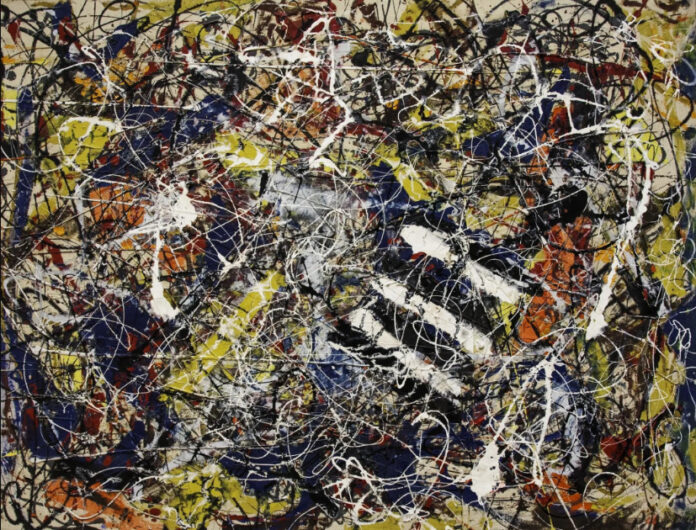Paul Jackson Pollock had a significant impact on the art of the second half of the twentieth century, while he did not have a formal education. Paul Jackson Pollock spent only one year at the High School of Applied Arts in Los Angeles. And this is just one of many interesting facts about Jackson Pollock.
- Jackson Pollock created abstract expressionism.
Abstract expressionism is an art trend of the last century, which shifted the attention of the world from European classics to American innovation. Nevertheless, at the peak of his fame, the artist forever abandoned the “drip technique” that brought him worldwide success. The artist presented ink works to the public. Only one of them was sold at half price.
- The artist’s first name is Paul.
However, Pollock did not like it, so his family and friends called him Jack.
- Many of Pollock’s works are untitled and signed with numbers.
The artist did this so that people would perceive his canvases with a clear head, without having pre-established ideas.
- Some acquaintances specifically bought drinks for Jackson in bars.
Jackson’s friends did it to watch his drunken pranks.
- Jackson Pollock got into a car accident because he was driving under alcohol.
The mistress with him in the car claimed it was suicide.
So who was this Jackson Pollock?
American artist Jackson Pollock was born on January 28, 1912. In 1928, when the family settled in Los Angeles, the sixteen-year-old youth entered the High School of Applied Crafts but was almost immediately expelled for drinking and inappropriate behavior. The same year he was expelled from another school.
Jackson Pollock had a bad temper: arrogant and proud. In addition, the young man abused alcohol and smoking, which only exacerbated these features.
From 1935, Jackson often spent time in the experimental workshop, where he met artists who worked in freestyle and sought to get away from the academicism prevailing in the United States. Pollock was fascinated by surrealism, in particular by Picasso.
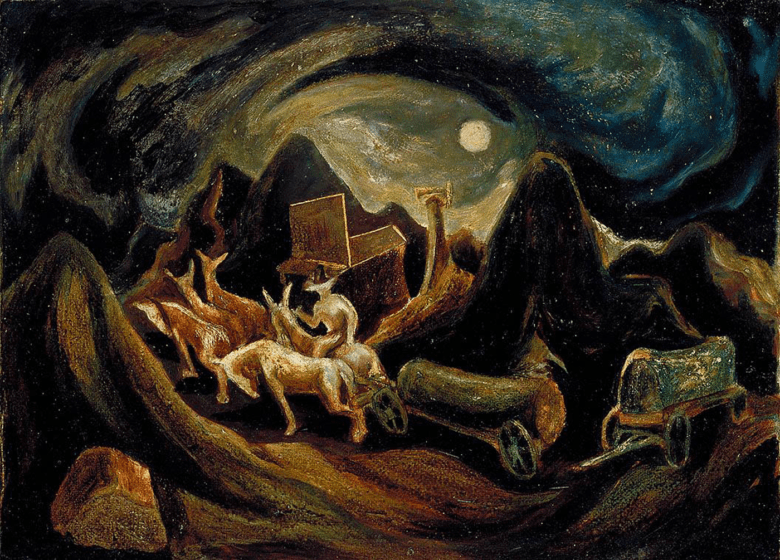
For four years, from 1938 to 1942, Jackson worked for the Federal Art Project. Almost all project participants adhered to realism, but Jackson Pollock continued to experiment and more and more approached abstractionism in his style.
Meanwhile, Jackson drank more and more, losing control of himself and his life. For several years he visited a psychotherapist and underwent treatment. For several years he visited a psychotherapist and underwent treatment. It is likely that it was then that Pollock determined for himself that the main source of creativity is not the outside world, but the inner state of a person.
In 1945 Pollock got married. His wife was an artist from a Russian-Jewish family, Lee Krasner.
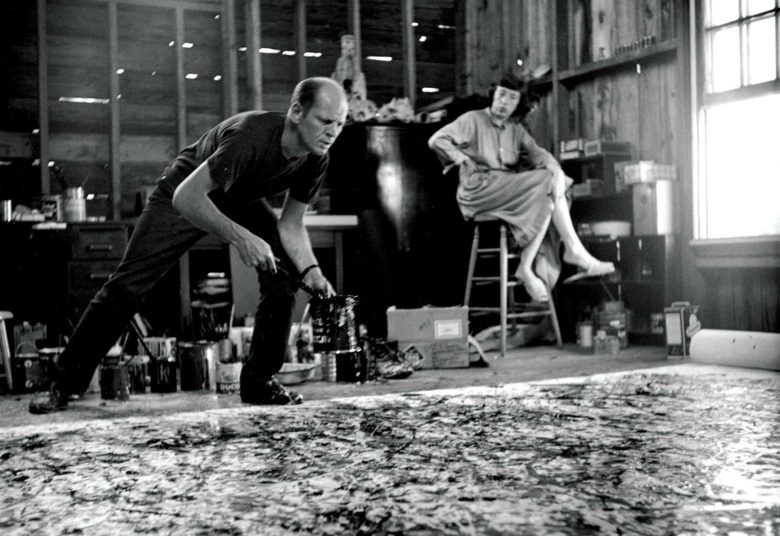
After starting a relationship with Lee, things went uphill for Jackson: largely thanks to her, in 1943 he signed a contract with the famous art collector Peggy Guggenheim. The same year, his first solo exhibition took place. Throughout his later career, Jackson collaborated with Peggy, who promoted the work of Pollock and other famous abstract artists.
Jackson’s works of this period are made according to the classical canons of abstract art: the rejection of the image of real objects, the violation of form and perspective, and experiments with color.
In 1947, a “drip period” began in Pollock’s work, which brought him success and made him world famous. The paintings of this stage really look like someone accidentally splashed paint on them. Oddly enough, this was a breakthrough.
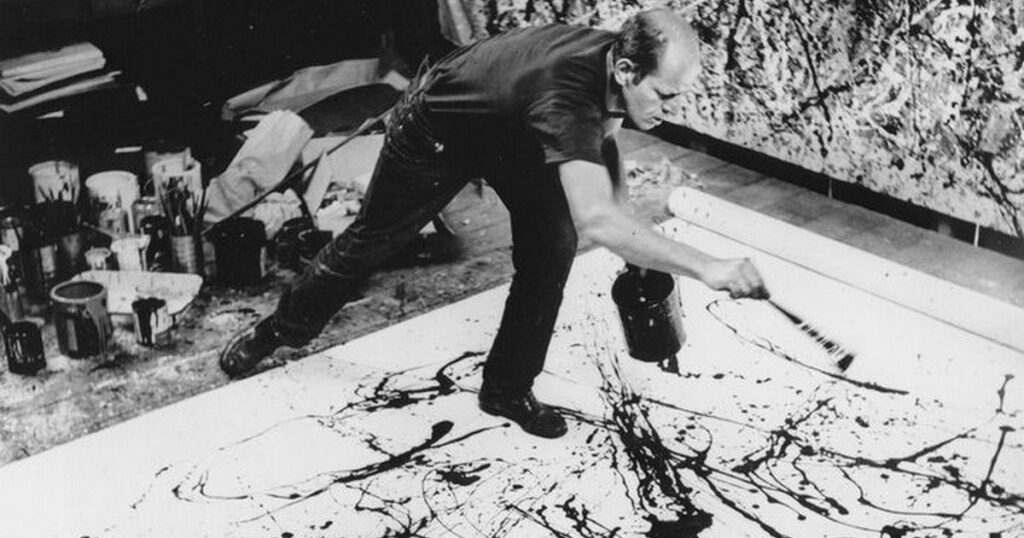
The very first exhibition of paintings made in the “drip technique” attracted enormous public attention. Jackson Pollock received fame, money, and recognition. He was discussed at all fashionable parties, his paintings were sold for a lot of money.
Separately, it is necessary to note the large size of the paintings. During the “drip period”, Jackson spread canvases on the floor to splatter paint, moving around the perimeter and sometimes even stepping on the canvases. The artist himself believed that art would sooner or later abandon limited easel painting and move on to wall painting.
But Jackson doubted the “drip technique” and could not even answer the question for himself whether his work was charlatanism. In 1951, at the height of his popularity, Pollock abandoned the flamboyant “drip technique” and began painting dark ink works that reflected his inner state.
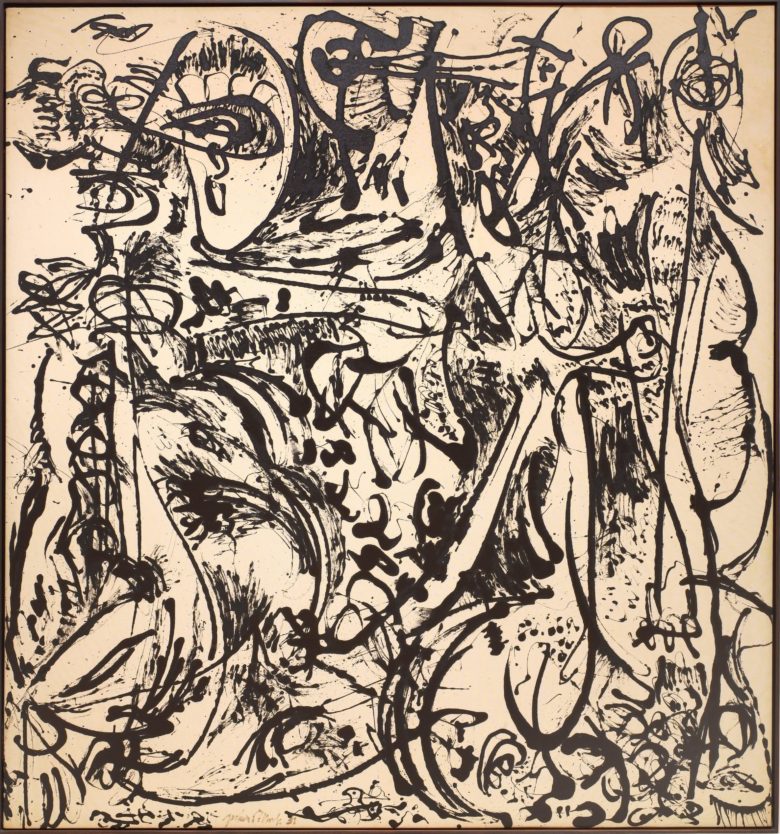
The first exhibition failed – only one work was sold. Jackson had no choice but to abandon unsuccessful attempts at black and white and return to brightness.
Since 1952, he has been experimenting with colors, balancing between abstractionism and the “drip technique”. But he seems to have exhausted his inspiration. For the last five years of his life, Jackson Pollock did not create any significant canvases.
Due to a creative crisis, and problems with money and alcohol, the relationship between the spouses was bursting at the seams. In early 1956, Pollock began a relationship with aspiring abstract artist Ruth Kligman, who was 18 years younger. On a warm August evening, Jackson was driving drunk as they drove to another party. Jackson lost control, and the car flew off the road three kilometers from the house.
Jackson Pollock died in a car accident on August 11, 1956.
Four months later, Pollock’s memorial exhibition was held at the Museum of Modern Art in New York. In 1967, an even larger display of the artist’s works took place there. In 1998 and 1999 major exhibitions were held at the MSI and at the Tate Museum in London.






